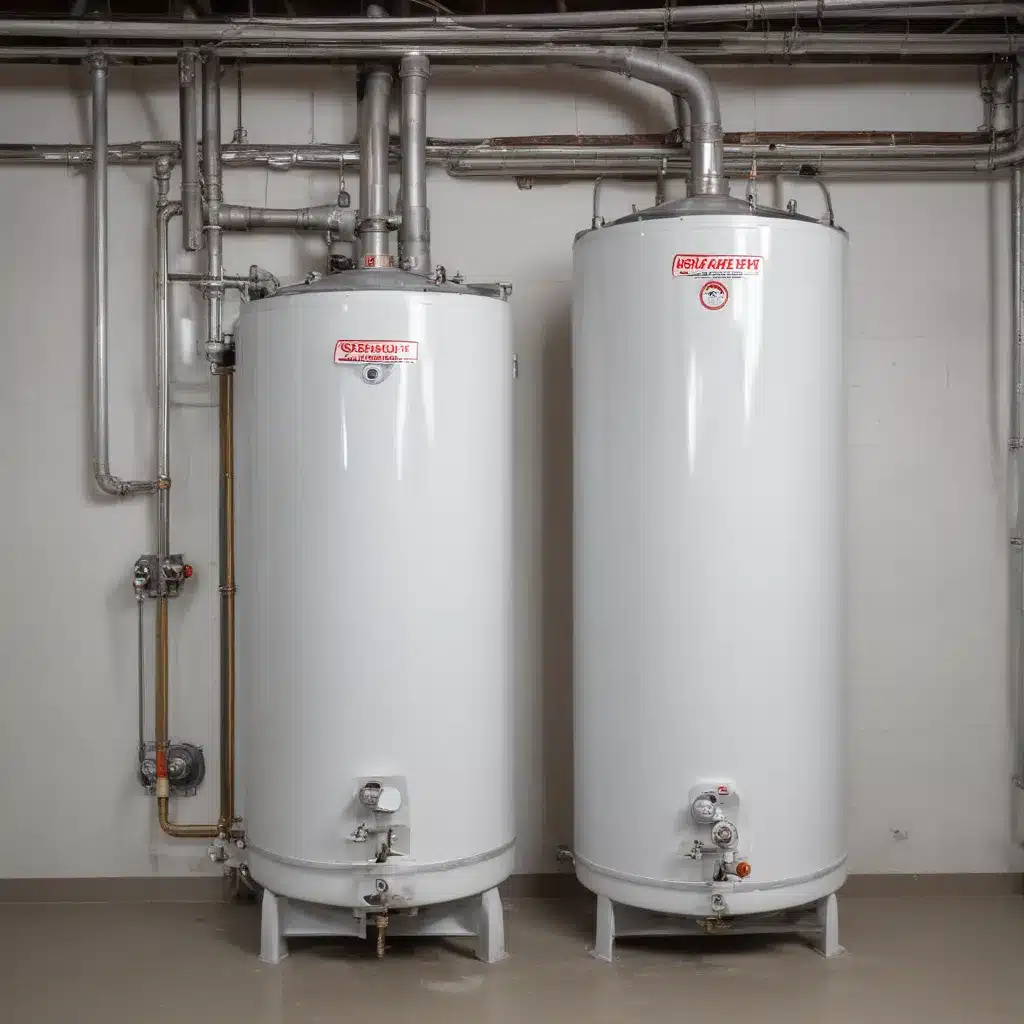
As an experienced water heater specialist, I’ve seen firsthand the importance of proper maintenance in extending the lifespan of storage tank water heaters. One of the most critical components to monitor and replace is the anode rod, a vital safeguard against corrosion that can significantly impact your unit’s longevity. In this comprehensive guide, we’ll explore the role of the anode rod, best practices for inspection and replacement, and other essential maintenance techniques to keep your water heater running smoothly for years to come.
The Importance of the Anode Rod
The anode rod is a sacrificial component within your water heater that plays a crucial role in preventing the steel tank from corroding. This rod, typically made of magnesium, aluminum, or a combination of metals, is designed to be more reactive than the tank itself. As the rod slowly deteriorates over time, it attracts corrosive elements in the water, shielding the tank from damage and prolonging its lifespan.
Without a properly functioning anode rod, your water heater tank is left vulnerable to rust and premature failure. Neglecting to replace the rod when needed can drastically reduce the overall life expectancy of your unit, leading to expensive repairs or even a complete replacement. That’s why it’s essential to regularly inspect and replace the anode rod as part of your water heater maintenance routine.
Inspecting and Replacing the Anode Rod
The frequency with which you should inspect and replace the anode rod depends on several factors, including the quality of your water, the rod material, and the usage patterns in your home. As a general guideline, it’s recommended to check the rod every 2-3 years and replace it when it’s been worn down to about half its original size.
To inspect the anode rod, you’ll need to locate it, typically found on the top or side of the water heater tank. Using a wrench, carefully remove the hex-head cap and pull out the rod. Examine it closely for signs of significant corrosion or deterioration. If the rod appears heavily worn, with the core wire exposed, it’s time for a replacement.
When replacing the anode rod, be sure to select the appropriate type and size for your water heater model. Consult the manufacturer’s recommendations or speak with a professional plumber to double-check that you’re getting the right component. Wrap the new rod’s threads with plumber’s tape, then carefully thread it back into the tank, taking care not to overtighten.
Other Maintenance Considerations
While the anode rod is a critical component, it’s just one aspect of maintaining your water heater for optimal longevity. Here are some other essential maintenance tasks to consider:
Sediment Flushing
Over time, mineral deposits and sediment can accumulate at the bottom of the tank, reducing efficiency and potentially leading to overheating or premature failure. Regularly flushing the tank, typically once a year, can help remove this buildup and keep your water heater running at its best.
Pressure Relief Valve Testing
The pressure relief valve is a vital safety feature that prevents dangerous pressure buildup within the tank. Test this valve annually by carefully lifting the lever and ensuring it’s functioning correctly.
Thermostat Adjustment
Setting your water heater thermostat to the recommended temperature of 120°F (49°C) can not only improve safety but also boost energy efficiency and reduce operating costs.
Professional Inspections
While DIY maintenance is important, having a licensed plumber perform a comprehensive annual inspection can help identify any issues or potential problems before they become more serious.
By staying on top of these maintenance tasks, you can significantly extend the lifespan of your storage tank water heater and enjoy reliable, energy-efficient hot water for years to come.
Factors Affecting Anode Rod Lifespan
Several factors can influence the rate at which your water heater’s anode rod deteriorates, including:
- Water Quality: Hard water, with high mineral content, can cause the rod to wear out more quickly. Softer water is generally less corrosive.
- Usage Patterns: Households with higher hot water demands may see the anode rod wear down faster than those with lower usage.
- Water Heater Age: As your water heater approaches the end of its expected lifespan (typically 8-12 years), the anode rod may need more frequent replacement.
- Rod Material: Aluminum and zinc-aluminum rods tend to last longer than standard magnesium rods in certain water conditions.
By understanding these factors, you can better anticipate when to inspect and replace the anode rod, ensuring your water heater continues to operate efficiently and safely.
Upgrading and Retrofitting
If your water heater is nearing the end of its lifespan, or you’re experiencing persistent issues despite regular maintenance, it may be time to consider upgrading or retrofitting your system. Some options to explore include:
Tank Relining
For older water heaters, a tank relining can restore the interior and extend the unit’s usable lifespan by several more years.
Heating Element Upgrades
Replacing aging or inefficient heating elements with more advanced models can improve the overall performance and efficiency of your water heater.
Smart Controller Integration
Integrating your water heater with a smart thermostat or control system can provide enhanced energy monitoring and optimization capabilities.
Consulting with a professional plumber can help you evaluate your options and determine the best course of action for your specific needs and budget.
Conclusion
Protecting the integrity of your water heater’s storage tank is essential for ensuring reliable hot water and maximizing the lifespan of your unit. By prioritizing regular anode rod inspections and replacements, as well as implementing other essential maintenance tasks, you can safeguard your investment and enjoy the benefits of a well-maintained water heater for years to come.
If you have any questions or need assistance with your water heater maintenance, don’t hesitate to reach out to the experienced team at Water Heater Pick. We’re dedicated to helping homeowners and plumbers alike keep their water heating systems running at their best.
Tip: Flush your water heater tank at least once per year

